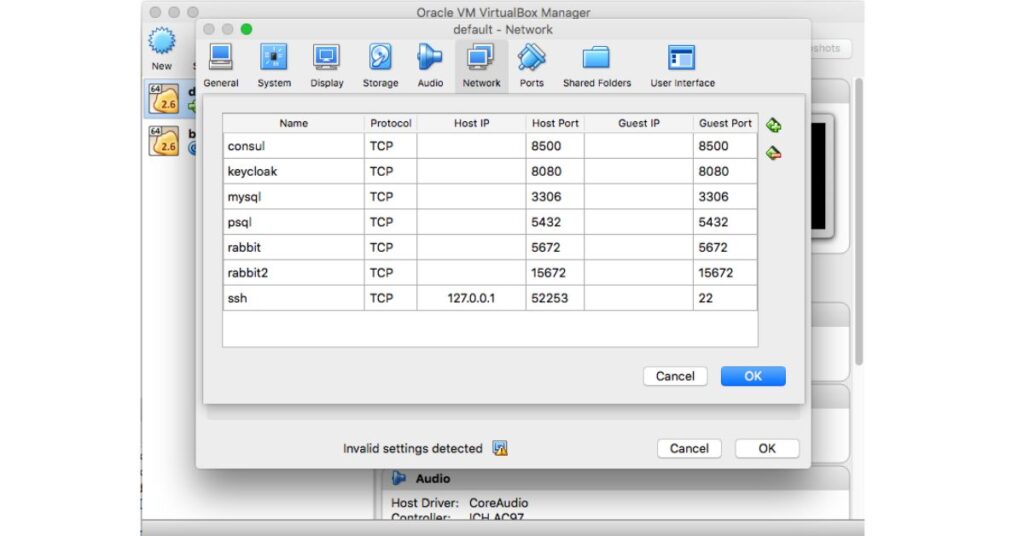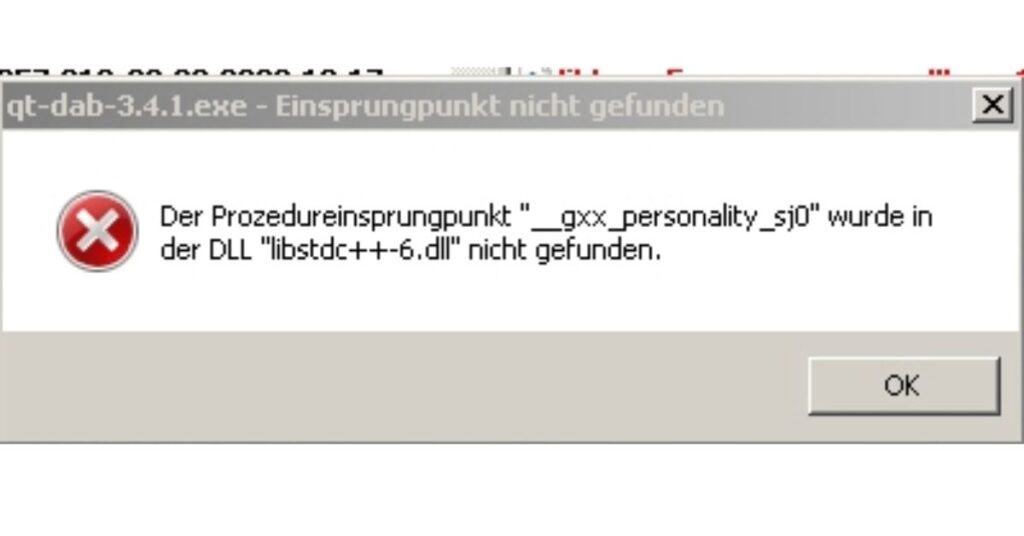In the world of networking and software development, certain combinations of numbers and symbols can hold significant meaning. One such combination is “127.0.0.1:62893”.
To the uninitiated, this may appear as a random string of digits, but to those in the know, it represents a specific address and port number that can be crucial in various computing scenarios. This article aims to demystify this address, explain its importance, and guide you through troubleshooting common errors associated with it.
What is 127.0.0.1 IP Address 127.0.0.1:62893?
127.0.0.1 is a special-purpose IPv4 address known as the “localhost” or “loopback” address. It always refers to the current device you’re using, whether it’s a computer, smartphone, or any other network-capable device. When you see 127.0.0.1, you can think of it as “this computer” or “self.”
The “:62893” part of the address refers to a specific port number. In networking, ports are used to distinguish different services or processes running on the same device. Port numbers can range from 0 to 65535, with some reserved for specific purposes.
So, when you see 127.0.0.1:62893, it means “this computer, port 62893”. This combination is often used in software development, testing, and debugging scenarios.
Benefits of 127.0.0.1:62893
Using 127.0.0.1:62893 offers several advantages in various computing contexts:
- Local Testing: Developers can use this address to test applications on their local machine without needing an internet connection or affecting other users.
- Improved Security: Since the traffic never leaves your device, it’s inherently more secure than communicating over a network.
- Reduced Latency: Communication with localhost is faster than network communication, making it ideal for performance-sensitivwe applications.
- Isolation: You can run and test services in isolation from the rest of the network, which is useful for debugging and development.
- Consistency: The localhost address is the same on all devices, providing a consistent environment for development and testing across different machines.
How 127.0.0.1:62893 Works
When an application or service on your computer tries to connect to 127.0.0.1:62893, it’s essentially talking to itself. Here’s a simplified explanation of the process:
- The application sends a request to 127.0.0.1:62893.
- The operating system recognizes this as a loopback address.
- Instead of sending the request out to the network, it routes it back to the same machine.
- If there’s a service listening on port 62893, it receives the request and responds.
- The response is sent back to the original application, all without ever leaving your device.
This process happens extremely quickly, making it ideal for testing and development scenarios where you need rapid feedback.
Is it Safe to Expose Port 62893 Publicly?

While 127.0.0.1:62893 is safe for local use, exposing any port to the public internet carries potential risks. Here are some considerations:
- Purpose: Understand why you’re considering exposing the port. Is it necessary for your application to function?
- Security Measures: If you must expose the port, implement strong security measures such as firewalls, authentication, and encryption.
- Regular Audits: Continuously monitor and audit the exposed port for any suspicious activity.
- Alternative Solutions: Consider using VPNs or reverse proxies instead of directly exposing internal ports.
- Principle of Least Privilege: Only expose what’s absolutely necessary, and restrict access as much as possible.
Remember, the safest approach is to keep internal services internal unless there’s a compelling reason to expose them.
How to get your computer’s IP address?
Knowing your computer’s IP address can be useful in various networking scenarios. Here’s how to find it on different operating systems:
Windows:
- Open Command Prompt (you can search for it in the Start menu)
- Type “ipconfig” and press Enter
- Look for the “IPv4 Address” under your active network adapter
Mac:
- Click on the Apple menu and select “System Preferences”
- Click on “Network”
- Select your active network connection (e.g., Wi-Fi or Ethernet)
- Your IP address will be displayed on the right side
Linux:
- Open a terminal
- Type “ip addr show” or “ifconfig” and press Enter
- Look for the “inet” address under your active network interface
The IP/localhost address helps you in several ways
Understanding and using the localhost address (127.0.0.1) can be beneficial in many ways:
- Development: It allows you to test web applications without deploying them to a remote server.
- Network Troubleshooting: You can use it to check if your network stack is functioning correctly.
- Security: It provides a way to run services that should only be accessible locally.
- Performance Testing: You can benchmark applications without network latency affecting results.
- Learning Networking: It’s a great starting point for understanding basic networking concepts.
Resolution for Error: Disconnected from the designated VM, located at address 127.0.0.1:62893.

This error often occurs in development environments, particularly when working with virtual machines or debugging applications. Here’s how to approach resolving it:
Fixing the Error
- Check VM Status: Ensure your virtual machine is running and accessible.
- Port Availability: Verify that port 62893 is not being used by another application.
- Firewall Settings: Check if your firewall is blocking connections to this port.
- Restart Services: Try restarting the relevant development services or your IDE.
- Network Stack: In some cases, restarting your computer’s network stack might help.
Still, Facing Issues?
If you’re still encountering problems, consider these advanced steps:
- Check Application Logs: Look for specific error messages in your application or VM logs.
- Use Network Diagnostic Tools: Tools like netstat or tcpdump can help identify network issues.
- Consult Documentation: Check the documentation for your specific development environment or VM software.
- Community Forums: Seek help from developer communities or forums related to your tools.
- Professional Support: If all else fails, consider seeking help from professional IT support or the software vendor.
Breaking Down the Code
To better understand what 127.0.0.1:62893 means, let’s break it down into its components:
127.0.0.1: Localhost
- This is a special IP address that always refers to the local machine.
- It’s part of the loopback network (127.0.0.0/8).
- Any address starting with 127 will loop back to your local machine.
62893: Port Number
- This is a specific port number.
- Ports range from 0 to 65535.
- Ports 0-1023 are well-known ports reserved for specific services.
- Ports 1024-49151 are registered ports.
- Ports 49152-65535 are dynamic or private ports.
Roles and Applications
The combination of 127.0.0.1:62893 can serve various roles in different contexts:
Development and Testing
Developers often use localhost addresses with specific ports to test web applications, APIs, or services without deploying them to production servers. This allows for rapid testing and debugging in a controlled environment.
Networking
Network administrators might use localhost addresses to test network configurations, firewall rules, or to isolate certain services for security or performance reasons.
Security
Security professionals can use localhost addresses to create sandboxed environments for analyzing potentially malicious software or to set up isolated services that shouldn’t be accessible from the network.
Read This Blog: The Lost Flowers Of Alice Hart Season 2: Is It Renewed Or Cancelled? Everything We Know
Debugging
When troubleshooting network-related issues, developers and IT professionals often start by testing connectivity to localhost to ensure the basic network stack is functioning correctly.
Isolated Environment
For applications that need to communicate between processes on the same machine without exposing data to the network, localhost addresses provide a secure and efficient solution.
Practical Example
Let’s consider a practical example to illustrate the use of 127.0.0.1:62893:
Imagine you’re developing a web application that consists of a frontend and a backend API. During development, you might run your frontend on http://127.0.0.1:3000 and your backend API on http://127.0.0.1:62893.
Your frontend code might include API calls like this:
javascript
fetch(‘http://127.0.0.1:62893/api/data’)
.then(response => response.json())
.then(data => console.log(data))
.catch(error => console.error(‘Error:’, error));
This setup allows you to develop and test both parts of your application on your local machine, without needing to deploy to a server or expose your in-progress work to the internet.
Internal Communication
One of the primary uses of localhost addresses like 127.0.0.1:62893 is for internal communication between different components or services running on the same machine. This approach offers several benefits:
- Speed: Communication within the same machine is much faster than over a network.
- Security: Data never leaves the machine, reducing the risk of interception.
- Simplicity: It’s easier to set up and manage services that only need to communicate locally.
- Resource Efficiency: Local communication uses fewer system resources compared to network communication.
- Isolation: You can run multiple services on different ports without interfering with each other.
Security Concerns
While using 127.0.0.1:62893 is generally safe for local development, there are some security considerations to keep in mind:
Exposing Port 62893
If you’re considering exposing port 62893 (or any port) to the internet, be aware of the potential risks:
- Unauthorized Access: Without proper security measures, anyone could potentially access your service.
- Data Leakage: Sensitive information could be exposed if the service isn’t properly secured.
- Increased Attack Surface: Every open port is a potential entry point for attackers.
- Compliance Issues: Depending on your industry, exposing certain services might violate regulatory requirements.
- Resource Consumption: Public-facing services can be targeted by automated scans or attacks, consuming resources.
Security Exploits
Even for localhost services, be aware of potential security issues:
- Cross-Site Scripting (XSS): If your local service processes user input, it could be vulnerable to XSS attacks.
- Insecure Dependencies: Make sure all libraries and dependencies are up-to-date and free from known vulnerabilities.
- Privilege Escalation: Ensure your service doesn’t have unnecessary system privileges that could be exploited.
- Data Validation: Always validate and sanitize input, even in local development environments.
- Secure Coding Practices: Follow secure coding guidelines to minimize the risk of introducing vulnerabilities.
Denial-of-Service (DoS) Attacks
While less common for localhost services, DoS attacks can still be a concern:
- Resource Exhaustion: A poorly implemented service might be vulnerable to attacks that consume all available resources.
- Port Flooding: An attacker with access to your machine could attempt to flood the port with connection requests.
- Application-Level DoS: Certain types of requests or inputs might cause your application to hang or crash.
- Cascading Failures: If multiple services depend on each other, a DoS on one could affect others.
- Testing for Resilience: Consider implementing rate limiting and other DoS protection measures, even for local services.
Unauthorized Access
Even on localhost, unauthorized access can be a concern:
- Multi-User Systems: On shared systems, other users might be able to access your localhost services.
- Malware: Malicious software on your machine could potentially interact with localhost services.
- Remote Access Tools: If your machine allows remote access, localhost services might be accessible to remote users.
- Misconfiguration: Accidentally binding a service to all interfaces instead of just localhost could expose it.
- Plugin or Extension Vulnerabilities: In web development, certain browser plugins or extensions might be able to access localhost services.
Common Error: “Disconnected from the target VM, address: 127.0.0.1:62893”

This error is frequently encountered in Java development environments, particularly when using IDEs like IntelliJ IDEA or Eclipse for debugging. Let’s explore what it means and how to address it.
What It Means
This error typically indicates that the debugger has lost its connection to the Java Virtual Machine (JVM) running your application. The address 127.0.0.1:62893 suggests that the debugger was trying to communicate with the JVM on the local machine (127.0.0.1) using port 62893.
How to Fix It
Resolving this error often involves a combination of checking your development environment settings and your application configuration. Here are some steps to try:
- Restart Your IDE: Sometimes, simply closing and reopening your IDE can resolve connection issues.
- Check Port Availability: Ensure that no other application is using port 62893 on your machine.
- Firewall Settings: Verify that your firewall isn’t blocking the connection to port 62893.
- Debug Configuration: Review your debug configuration in the IDE to ensure it’s set up correctly.
- JVM Arguments: Check if you need to add any specific JVM arguments to enable debugging.
Detailed Fixes for the Error
Let’s dive deeper into some specific solutions for the “Disconnected from the target VM” error:
Start the Service
- Check if your application or service is actually running.
- If it’s not, start it manually or through your IDE.
- Ensure that the service is configured to listen on the correct port (62893 in this case).
Change Port Numbers
If port 62893 is consistently causing issues:
- Try changing the debug port in your IDE settings.
- Update your application configuration to use a different port.
- Remember to update any relevant documentation or team communication about the port change.
Configure Firewall
Firewall settings can often interfere with localhost connections:
Windows
- Open Windows Defender Firewall with Advanced Security.
- Create a new Inbound Rule allowing connections to port 62893.
- Ensure the rule is applied to your development environment’s profile (usually Private).
Mac/Linux
- Use the sudo ufw allow 62893 command to allow connections to port 62893.
- If you’re using a different firewall, consult its documentation for adding port exceptions.
Application-Specific Configuration
Some development frameworks or applications require specific configuration for debugging:
- Check your application’s documentation for any required debug settings.
- Ensure that remote debugging is enabled if you’re debugging a remote JVM.
- Verify that your IDE’s run/debug configurations match your application’s requirements.
Network Diagnostic Tools
Use network diagnostic tools to identify any connection issues:
- Use netstat -ano | findstr :62893 (Windows) or netstat -anp | grep :62893 (Linux/Mac) to check if the port is in use.
- Try telnet 127.0.0.1 62893 to test connectivity to the port.
- Use tools like Wireshark to analyze network traffic if you suspect more complex issues.
When to Seek Professional Help
While many development issues can be resolved through troubleshooting and online resources, there are times when seeking professional help is the best course of action:
Consult Software Documentation
Before escalating:
- Thoroughly review the documentation for your IDE and development framework.
- Check for known issues or bugs related to debugging and connectivity.
- Look for official troubleshooting guides or FAQs that might address your specific error.
Seek Help from a Developer
If you’ve exhausted your own troubleshooting options:
- Reach out to more experienced developers on your team.
- Post your issue on developer forums or Q&A sites like Stack Overflow.
- Consider contacting the support team for your IDE or development tools.
Read This Blog: Netwyman Blogs: SEO Your Ultimate Guide To Maximizing The Digital Landscape
Orage Technologies Services
For businesses facing persistent development or networking issues, professional services like those offered by Orage Technologies can be invaluable:
Application Development
Expert developers can help optimize your application’s architecture and resolve complex debugging issues.
Website Designing and Development
Professional web developers can ensure your web applications are built with best practices for performance and security.
Cloud Solutions
Cloud experts can help configure your development and production environments for optimal performance and reliability.
Cyber Security
Security professionals can audit your development practices and infrastructure to identify and mitigate potential vulnerabilities.
FAQ’s
What is the 127.0.0.1 Address Used For?
127.0.0.1 is the localhost address, used for testing and running services on the local machine.
Is 127.0.0.1 Safe?
Yes, 127.0.0.1 is safe as it only allows connections from your local machine.
Why is 127.0.0.1 Refused to Connect?
A “connection refused” error usually means no service is listening on the specified port on your local machine.
Why is My IP Address Not Connecting?
This could be due to firewall settings, network configuration issues, or the service not running on the expected IP/port.
Is 127.0.0.1 Always Localhost?
Yes, 127.0.0.1 is always localhost. In fact, any IP address in the range 127.0.0.0 to 127.255.255.255 refers to localhost.
Conclusion
Understanding the intricacies of localhost addresses like 127.0.0.1:62893 is crucial for developers, network administrators, and IT professionals. This knowledge forms the foundation for local development, testing, and troubleshooting of various network-related issues.
Throughout this article, we’ve explored the meaning and significance of 127.0.0.1:62893, delving into its components and how they function in different contexts. We’ve discussed its benefits in development scenarios, potential security concerns, and common errors associated with it, particularly in Java development environments.
Hey, Molar is the voice behind this all-encompassing blog, sharing expert insights and practical advice on business, real estate, and more. Dedicated to helping you navigate the complexities of these fields, Kelly provides the latest trends, in-depth analyses, and creative strategies to elevate your ventures.
